I never wanted to build another small form factor PC — until now
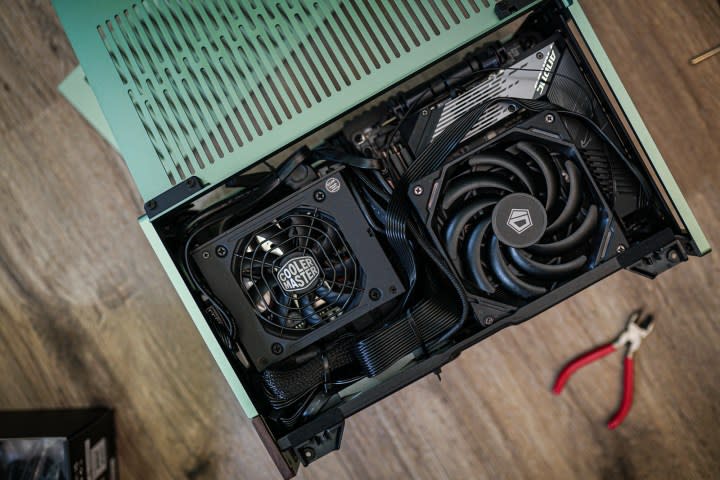
In my 15 years of building PCs, I’ve only ever tackled one small form factor (SFF) build. If you’d asked me two months ago, I would have told you that I’d never want to try it again.
But now that’s changing.
Earlier this month, Nvidia unveiled a new set of standards for manufacturers to follow. With some recent new releases showing that manufactures are taking it seriously, it’s tempting me to give it another shot.
Only for the brave
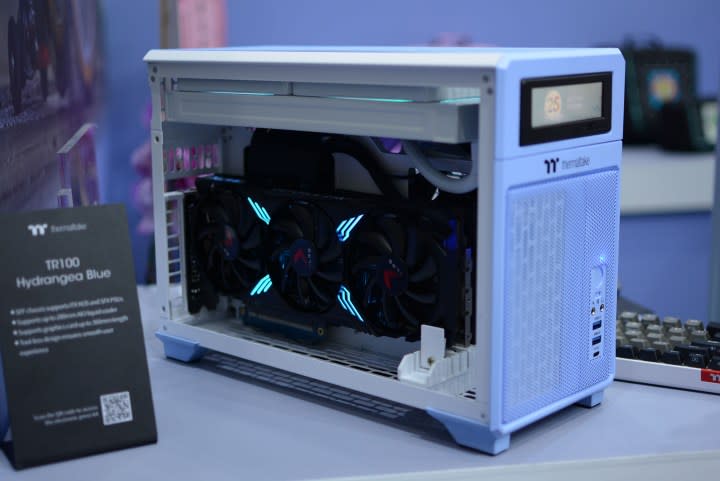
For the record, my SFF build went just fine — no major disasters or anything. But the amount of research was immense when compared to a regular build, and the whole process was stressful. Sure, I’ve dealt with my fair share of not-roomy-enough cases. I’ve wrestled (against my better judgment) with CPU fans that wouldn’t fit and I have once settled for a case that wouldn’t close. But none of this comes close to tackling an actual small form factor PC.
For the longest time, building a small form factor PC was reserved for the brave. It’s not like building inside a mid-tower PC, where you can often assume that most components will fit in just fine.
Every measurement has to be double-checked, and even if you do all your research, something might still not fit quite right. Some of it can come down to not having all the information before you shop. For example, graphics card makers will tell you the exact measurements of the card itself, but may neglect to mention how much clearance you need for the cables. (That can end in disaster if you’re dealing with a behemoth like the RTX 4090 with a slight penchant for melting connectors.)
Then there’s the question of how it will all run once your build is complete. Gaming PCs thrive if you give them plenty of cooling, and that gets tricky when you’re using a tiny case. Mini-ITX cases, with anywhere between 10 liters and 20L of volume, don’t have the space for robust liquid cooling systems or huge CPU fans, and with minimal room between components, they’re literally short on breathing room. This means optimizing your build once it’s complete and perhaps having to settle for something less capable just to make it stable.
This brings me to my last point — SFF PCs typically weren’t comparable to full-sized computers. While it’s possible to fit an RTX 4090 in a 10L case (check out how we did it here), most enthusiast graphics cards are simply too big to comfortably fit inside a chassis that small. That left builders with a frustrating choice between using less impressive components that also take up less space, or battling the odds and squeezing things in and hoping for the best.
For many, these issues were just not worth the hassle. As a result, small form factor PCs may have remained niche for years. But things are finally changing for the better.
Nvidia is changing the game
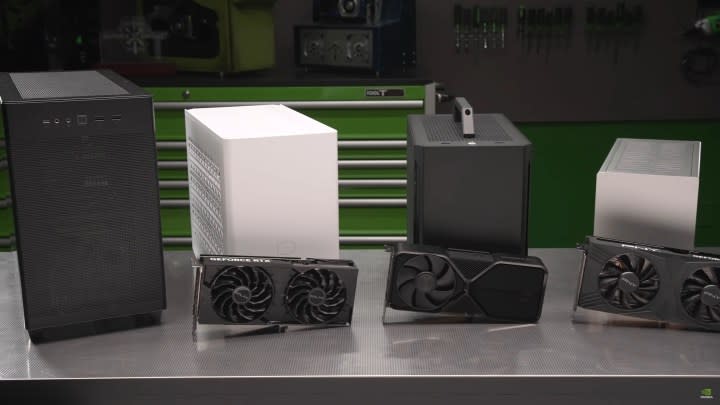
As we all know, Nvidia is responsible for some of the best graphics cards — but being “best” doesn’t mean that they don’t take up much space. While GPUs like the RTX 4060 often require just two slots, enthusiast cards like the RTX 4080 Super and the RTX 4090 bump that up to three or even four slots. There’s also the length of these GPUs. These days, nearly every Nvidia GPU comes with a dual- or triple-fan solution. This is great for cooling, but not so great for PC builders with a mini-ITX chassis.
Whether a card might fit in a PC case or not all comes down to precise measurements with a dash of hope thrown in, which is easily enough to dissuade PC builders from even trying. This is why Nvidia’s new small form factor standard spells great news for those of us who want a smaller PC.
The new guidelines, announced at Computex, are something that Nvidia will be incorporating with the help of its add-in board (AIB) partners and case manufacturers. The idea is to have a common standard that makes it easier to tell whether a particular case will fit an “SFF-ready enthusiast GeForce card.”
“Enthusiast” is a broad term that we’ve seen manufacturers use far and wide, but for this standard, Nvidia requires that the card is at least an RTX 4070 or higher. The measurements are rather restrictive, too. To qualify, the GPU must measure no more than 155mm in height (and that includes power cable bend radius), 304mm in length, and 50mm in depth, which amounts to 2.5 slots.
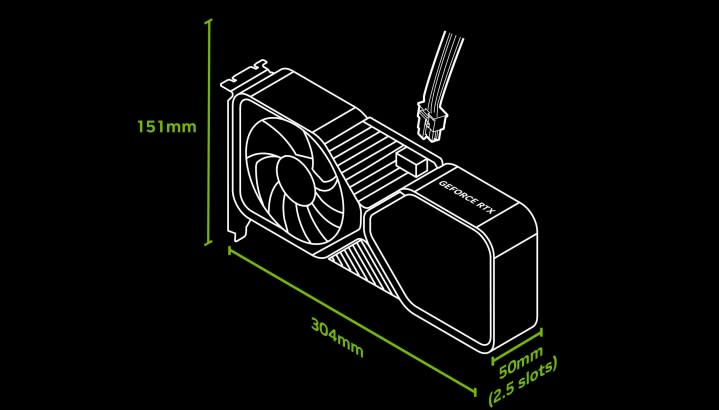
If these cards were just of the RTX 4070 variety, that would be less of a big deal, as the 4070s typically fit similar dimensions. However, Nvidia and its partners already have 36 RTX 40-series GPUs available that meet the criteria, and there are even some RTX 4080 Super cards in there. It’s not just that squeezing an RTX 4080 Super to fit is pretty impressive. It’s that this opens the door to a whole new world of gaming for people who need a little more portability out of their PC.
Previously, if you didn’t want a full-blown desktop PC for any reason, your only option for a high-end, but portable computer was to get a laptop. Many gaming laptops are fantastic, but they’re still no match for a desktop with similar specs. Those who preferred desktops often had to settle for a less beefy mini PC. This lose-lose situation could now transform into something else entirely if these new guidelines truly take off and allow for high-end gaming in a small form factor PC.
Of course, just telling its partners to make the GPUs up to a certain size wouldn’t be enough to make much of a difference — the chassis must be roomy enough to fit a bigger GPU, too. To that end, the guidelines require that each SFF-ready case must be able to fit any of the GPUs on Nvidia’s SFF list, as well as meet Nvidia’s precise measurement standards. Nvidia’s partners already have a bunch of cases at the ready, many of which made an appearance during Computex.
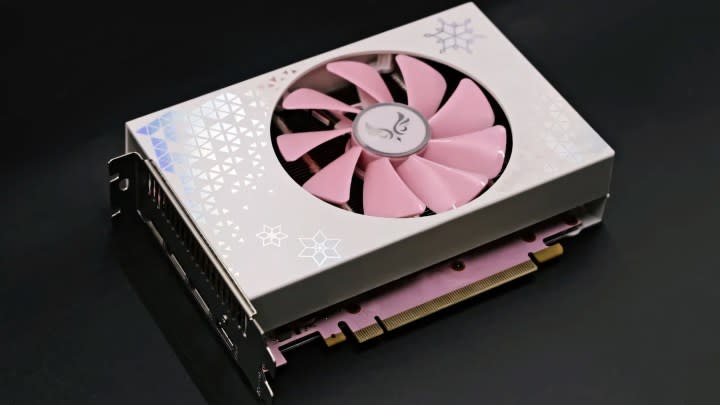
We’ve got slimmer RTX 4080s, but what about a significantly shorter GPU that’s not an entry-level card? This is another piece of this small form factor puzzle that’s making me excited for what else might be coming. This tiny, tiny RTX 4070, pictured above, isn’t just a dual-slot card. It only sports a single fan, which is unheard of in a midrange card such as this.
Even much less powerful cards than the RTX 4070 usually sport two fans, but that makes them a lot harder to fit inside a cramped case. However, Zephyr’s ITX Sakura Blizzard RTX 4070 proves that it’s possible to squeeze a lot of performance in a tiny package. Measuring just 172mm by 123mm by 42mm, the card is almost bound to fit inside any mini-ITX case of your choosing.
Seeing this kind of cooling on an RTX 4070 scares me a little, but Zephyr assures that the temperatures aren’t just kept at bay — they’re said to be even better than in a dual-slot design card. Of course, we can’t know this for a fact without testing it ourselves.
Considering that an RTX 4070 can outperform an RTX 4090 when DLSS 3 is enabled, a card like this truly shows why Nvidia might want to push for these SFF guidelines to take off.
Time to replace your console?
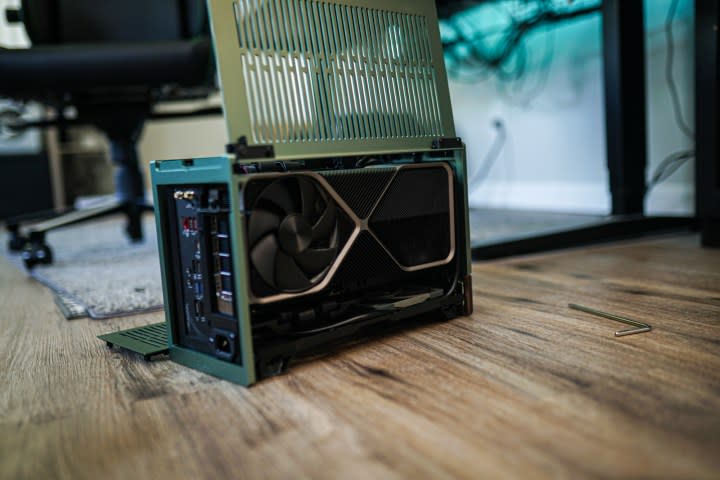
It’s safe to say that the small form factor PC market might be on the cusp of entering an era of abundance. After years of being the forgotten middle child between gaming laptops and big desktops, people are finally starting to pay attention to SFF gaming in a more serious way. While it’s still early days, these guidelines, and the resulting smaller GPUs, could be a great start for a more interesting PC market.
With that said, do console makers have anything to worry about? Yes and no. While it’s true that we might finally start seeing more competitive small form factor PCs, consoles are still difficult to compare. They’re cheaper, often smaller, and for many, easier to navigate. They’re also easier to come by — no one’s stopping anyone from buying an Xbox, but building a mini PC is a (fun, but tiring) journey. It’s nowhere near as simple.
On the other hand, the performance that an enthusiast SFF PC can provide will vastly outpace any console available. Quite simply, 4K gaming on something that can be put away inside a cupboard sounds like a dream, and let’s not forget that a PC provides access to many more titles.
Perhaps, over time, if these guidelines take off, we’ll start seeing more noteworthy prebuilts, and more importantly, components that fit well together without asking you to study their measurements for hours on end. Once we get to that point, consoles may have a worthy contender in small form factor PCs.


